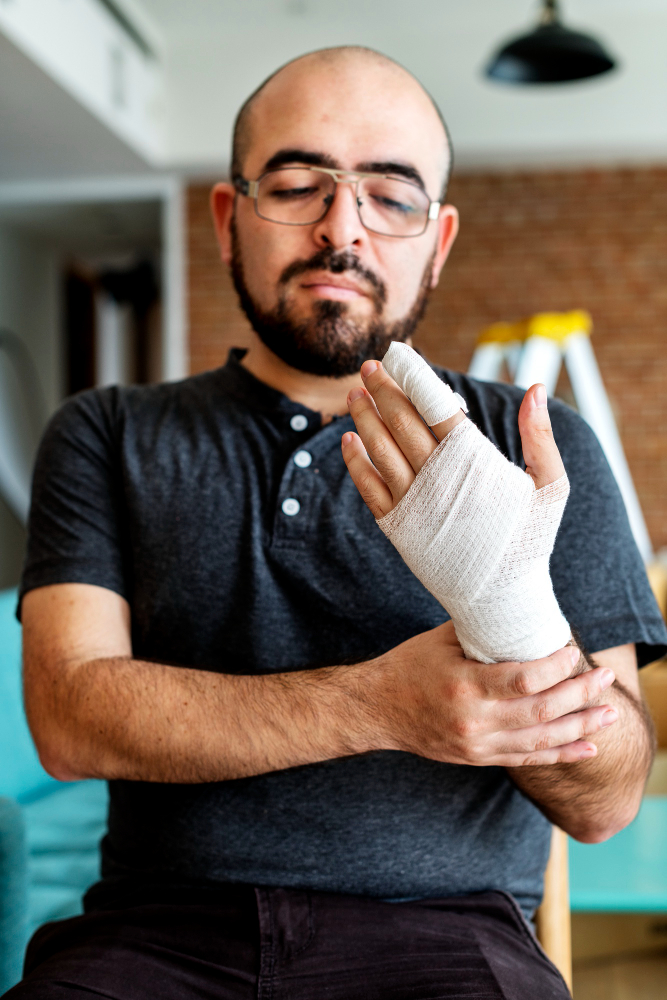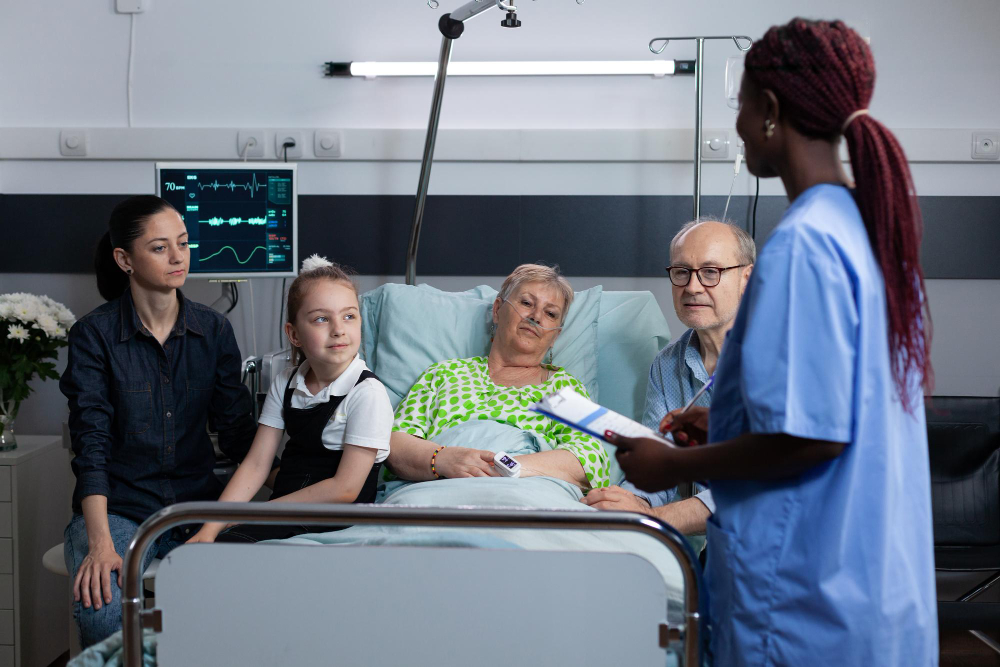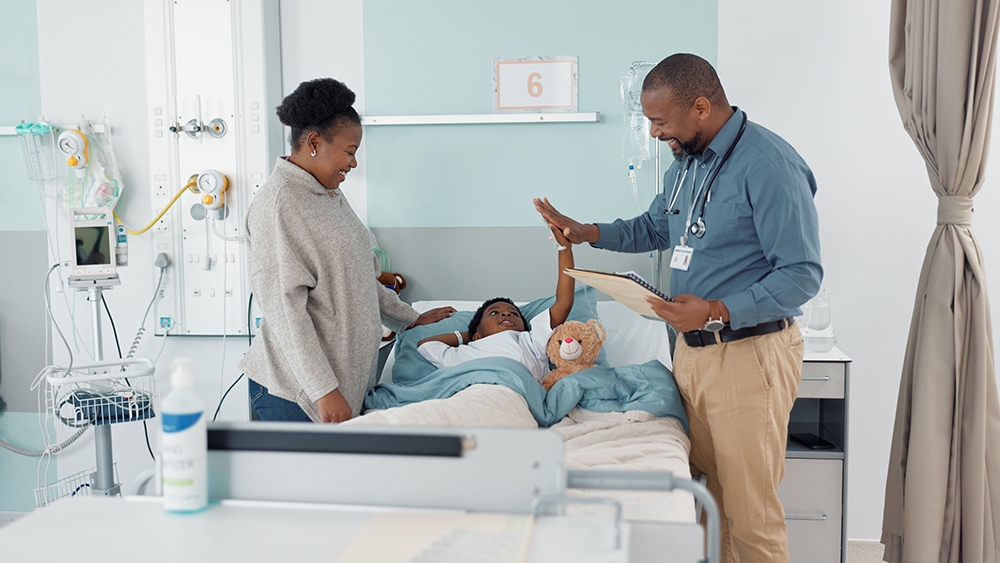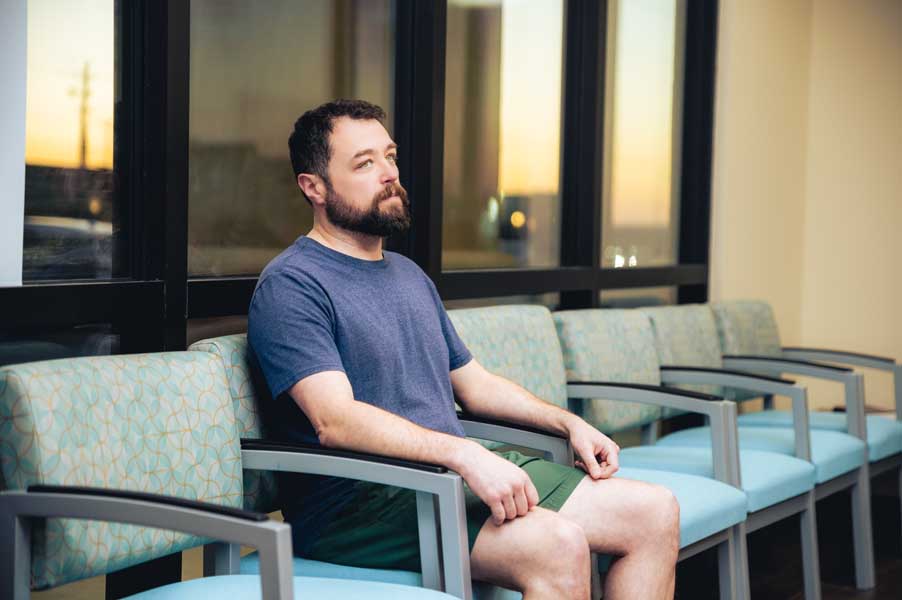Burn injuries can be distressing and severe, requiring immediate and appropriate emergency room care to minimize damage and promote healing.
Whether it’s a minor burn from touching a hot surface or a severe burn from a fire, knowing how to provide first aid and when to seek emergency room care is crucial, especially for vulnerable populations such as children and infants.
First Aid for Burn Injuries
Depending on the severity of the burn, you can handle treatment at home. Even if you think you’re planning on going to the ER for the injury, you can tackle first aid while you wait for first responders or for someone to get you to the hospital. The key is knowing what you need to do for the burn.
1. Stop the Burning Injuries
The first and most crucial step is to stop the burning process. You’ll need to remove the person, or yourself, from the source of the burn as fast as you can.
When dealing with thermal burns, extinguish the flames using water, a fire extinguisher, or by covering the person or yourself with a blanket. If it’s a chemical burn, remove any contaminated clothing and rinse the skin with running water for at least 20 minutes.
2. Cool the Burn Injury
Most people immediately think using cold water to cool a burn is right, but it’s not. Take cool water, not cold, and run it over the burn for 10 to 20 minutes. This helps to reduce pain, swelling, and the risk of further damage. Avoid using ice or very cold water, as they can cause more harm by damaging the skin.
3. Protect the Burn Injury
After cooling the burn with water, cover the burn with a sterile, non-stick bandage or a clean cloth. Doing this will help protect the burn from infection and help keep it clean. Try to avoid using fluffy cotton or any material that might stick to the wound.
4. Relieve Pain
Over-the-counter pain relievers like ibuprofen or acetaminophen can help reduce pain and inflammation from the burn. Be sure to follow the dosage instructions carefully, and never give aspirin to children or infants, and take them to an emergency room for children ASAP.
5. Prevent Shock
Burn victims can go into shock when it’s severe enough. Shock is a life-threatening condition, and you’ll need to head to the ER if you or another person start showing signs of the condition.
Keep the person warm and comfortable. If possible, lay them flat with their feet elevated. If the burn is severe, try not to give them anything to eat or drink. This will allow them to get the surgery they need faster.
When to Visit the Emergency Room for Burn injuries
While minor burns are manageable at home, some require immediate medical attention. Knowing when to head to the emergency room, especially a specialized children’s emergency room or newborn emergency room, can significantly affect the outcome.
1. Size and Depth of the Burn
The burn classification will help you determine if you need to seek medical attention:
- First-degree burns: These burn the outermost layer of the skin and might include minimal swelling and pain but can generally receive home treatment.
- Second-degree burns: If the burn is larger than 3 inches or covers a major joint, seek emergency care.
- Third-degree burns: These deep burns affect all layers of the skin and potentially underlying tissues. Regardless of size, they require immediate medical attention.
2. Location of the Burn
Burns on the face, hands, feet, groin, buttocks, or major joints should receive evaluation in the emergency room due to the potential for functional and cosmetic damage.
3. Burn Injuries in Children and Infants
Children’s skin is more delicate, and they are at a higher risk of complications from burns. Any burn that causes significant pain, blisters, or affects a large area should receive assessment in a children’s or infant emergency room.
4. Chemical and Electrical Burn Injuries
These burns can cause internal damage that is not immediately visible on the skin. Emergency room care is essential to address potential complications.
5. Signs of Infection
If a burn shows signs of infection, such as increased pain, redness, swelling, or oozing, it’s crucial to seek medical attention promptly.
Emergency Room Care for Burn Injuries
When dealing with a burn injury, finding a 24-hour emergency room is best. When you arrive at the emergency room, the medical team will assess the burn’s severity and extent. Here’s what you can expect during your visit:
- Initial Assessment & Stabilization: The ER team stabilizes the patient by ensuring they have a clear airway and circulation. They often start IV fluids for hydration and pain relief.
- Wound Cleaning & Debridement: The burn will be thoroughly cleaned and debrided if necessary to help prevent infection.
- Dressings & Medications: Medical professionals will apply dressings to protect the burns and prescribe antibiotics and pain medication if necessary.
- Monitoring & Specialized Care: The patient might admit to the burn unit or ICU for ongoing monitoring and treatment for severe burns.
- Rehab & Follow-Up: Severe burns have a long recovery that can include physical therapy. The medical team will schedule follow-ups to monitor the healing process.
Burn Injuries in Children and Infants
Burns are particularly concerning in children and infants. Their skin is thinner, making them more susceptible to severe burns. Plus, kids and infants might not be able to communicate the extent of their pain effectively. This is why specialized care in a children’s or newborn emergency room is critical.
1. Seek Immediate Emergency Room Care
Children with burns should head to the emergency room if the severity of the burn is unclear. Quick, professional intervention can prevent complications and promote better outcomes.
2. Visit Pediatric Specialists
Children’s emergency rooms have pediatric specialists trained to handle young patients’ unique needs. They provide a child-friendly environment that can help reduce the stress and fear of emergency medical care.
3. Follow All Care Instructions
Parents and caregivers receive guidance on how to care for their child’s burn injury at home and what signs to watch for that might indicate complications. This support is crucial for the child’s recovery and the family’s peace of mind.
Burn Injury Prevention Tips
Burns are often preventable. There are several things you can do to protect yourself, your children, and anyone else from suffering from a burn:
- Always supervise children around hot surfaces, open flames, and stoves.
- Use safety gates around dangerous areas where they could receive a burn.
- Teach children the dangers of fire and hot objects so they know to avoid them.
- Install working smoke detectors in your home.
- Have at least one functional fire extinguisher in the home.
- Never leave your kitchen unattended while cooking.
- Take protective measures like using oven mitts when handling hot pots and pans.
- Keep your water heater below 120°F to prevent hot water burns.
- Regularly check electric appliances and cords to prevent electrical burns.
Let Reliant Emergency Room Treat Your Burn Injuries
Burn injuries often require prompt and appropriate first aid followed by professional medical care. Knowing when to visit the emergency room can significantly affect the healing process and overall outcome.
If you need immediate and urgent care, come to Reliant Emergency Room. We are open 24/7 and ready to provide expert treatment for all burn injuries. Your health and safety are our top priorities.







